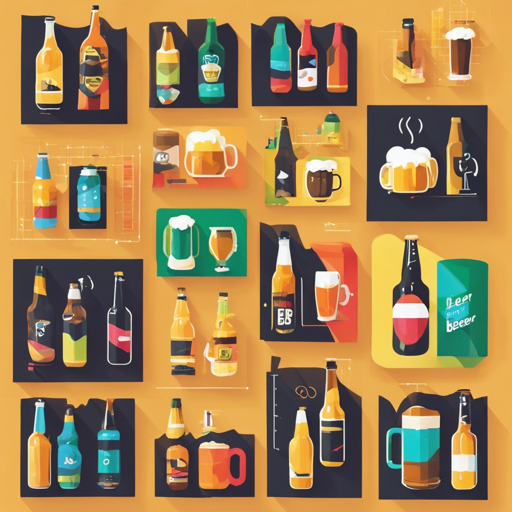Welcome to the fascinating world of Beer CSS! A CSS framework that promises to help developers create material design interfaces swiftly and effortlessly! In this article, we’ll guide you through the process of getting started with Beer CSS, the innovative framework inspired by the simplicity of beer brewing.
Why Choose Beer CSS?
- User-friendly 3-ingredient approach to styling: settings, elements, and helpers
- A minimalist framework that’s 10x smaller than other Material Design frameworks
- No complex configurations or dependencies required
- Compatible with any JavaScript framework
Understanding the 3 Key Ingredients
Let’s use an analogy to explain the core concepts of Beer CSS. Imagine you are a chef creating a delicious dish. The three main ingredients you rely on are:
- Settings: Just as a chef sets the kitchen’s environment (temperature, cleanliness), settings affect the entire document. For instance, using a class like
body class="dark"sets the mood for your whole application. - Elements: These are like the vegetables and proteins you include in your recipe. In Beer CSS, elements refer to the tags or components that make up your interface.
- Helpers: Think of these as the spices that enhance the flavors of your dish. Helpers in Beer CSS help customize and scale the elements to fit your needs, allowing for easy enhancements.
Getting Started with Beer CSS
To kick-off your development process with Beer CSS, there are two main approaches you can take: via CDN or NPM.
Using CDN
Add the following links in your HTML file:
<link href="https://cdn.jsdelivr.net/npm/beercss@3.7.10/dist/cdnbeer.min.css" rel="stylesheet">
<script type="module" src="https://cdn.jsdelivr.net/npm/beercss@3.7.10/dist/cdnbeer.min.js"></script>
<script type="module" src="https://cdn.jsdelivr.net/npm/material-dynamic-colors@1.1.2/dist/cdnmaterial-dynamic-colors.min.js"></script>Using NPM
If you prefer using NPM, run the following command:
npm i beercss
npm i material-dynamic-colorsBasic HTML Setup
Here’s a simple HTML structure to get you started:
<html>
<head>
<meta charset="UTF-8">
<title>Hello World</title>
<link href="https://cdn.jsdelivr.net/npm/beercss@3.7.10/dist/cdnbeer.min.css" rel="stylesheet">
</head>
<body class="dark">
<nav class="left">
<header>Cheers</header>
</nav>
</body>
</html>Troubleshooting Tips
- Ensure that you include the CDN links before the closing </head> tag.
- If using NPM, check that you have a valid package.json file and have installed Beer CSS correctly.
- Clear your browser’s cache if styles do not appear as expected after linking the framework.
If you need further assistance or would like to collaborate on AI development projects, stay connected with fxis.ai.
Conclusion
Getting familiar with Beer CSS can significantly simplify the process of building modern interfaces, much like drinking a refreshing beer after a long day’s work. With its straightforward structure and lightweight design, it’s just what you need to promote productivity in your development journey.
At fxis.ai, we believe that such advancements are crucial for the future of AI, as they enable more comprehensive and effective solutions. Our team is continually exploring new methodologies to push the envelope in artificial intelligence, ensuring that our clients benefit from the latest technological innovations.

